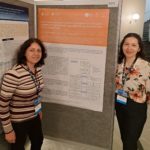
A team of researchers from the Sant Pau Research Institute (IR Sant Pau) and the Spanish National Research Council (CSIC) has identified a new protein in the blood, EPAC1, as a sensitive and specific marker of severe coronary artery disease (CAD). The findings, published in the international journal Journal of Translational Medicine, pave the way for new tools to improve early diagnosis and risk stratification of this disease, which remains one of the leading causes of death in the Western world.
The study, led by Dr. Vicenta Llorente-Cortés from the Lipids and Cardiovascular Pathology Group at the Institute of Biomedical Research of Barcelona (IIBB-CSIC), IR Sant Pau, and CIBERCV, focused on the search for circulating proteins directly related to the cellular processes occurring in the coronary arteries during the progression of atherosclerosis. In particular, the researchers analyzed the behavior of vascular smooth muscle cells (VSMCs), which in advanced stages of the disease transform into foam cells within arterial plaques.
A New Marker Derived From Hypoxic Arterial Cells
Using high-resolution proteomic techniques, the team identified that the protein EPAC1 (Exchange Protein directly Activated by cAMP 1) is secreted in lower amounts by these cells when they are exposed to hypoxic conditions, as occurs around advanced atherosclerotic plaques. They subsequently measured blood EPAC1 levels in a cohort of 202 patients with suspected CAD and demonstrated that lower levels of this protein were significantly associated with more extensive and severe disease.
“What’s most relevant is that EPAC1 reflects a very specific mechanism of advanced stages of coronary artery disease—not just a nonspecific inflammatory process,” explains Dr. Eduardo García, IR Sant Pau researcher and first author of the study. “This gives us a potential diagnostic tool with greater accuracy and specificity than currently available biomarkers.”
Better Diagnostic Performance Than Commonly Used Markers
In statistical analyses, EPAC1 showed superior predictive capability compared to widely used biomarkers such as high-sensitivity troponin T (hs-TnT) and high-sensitivity C-reactive protein (hs-CRP). A cutoff value of 9.16 ng/mL allowed for accurate sensitivity and specificity in distinguishing patients with severe coronary involvement, as measured by the Segment Involvement Score (SIS) through computed tomography.
In addition, the researchers confirmed in cellular studies that hypoxia reduces EPAC1 expression both at the messenger RNA and protein levels in smooth muscle cells transformed into foam cells, providing biological support for the clinical finding.
Clinical Implications and Future Applications
“The discovery of EPAC1 as a biomarker is not only diagnostically valuable but also helps us better understand the pathological processes occurring in the arteries during the development of atherosclerosis,” says Dr. Vicenta Llorente-Cortés. “In the near future, we could incorporate its measurement into clinical algorithms that help identify patients with more advanced disease who require earlier or more intensive intervention.”
The authors emphasize that it will be necessary to validate these findings in multicenter studies and larger populations. They also would like to explore whether blood levels of EPAC1 correlate with long-term cardiovascular events, such as myocardial infarction or sudden cardiac death.
Funding
The development of this project was funded by the FIS projects PI21/01523 and PI24/00618 from the Instituto de Salud Carlos III (ISCIII) and co-financed by the European Regional Development Fund (ERDF). The group also participates in the Research Networks (Metabolic Diseases and Cancer RED2018-102799-T), a project funded by MINECO. Additionally, the group is recognized by the Generalitat de Catalunya (2021 SGR 00834).
Article Reference:
García E, Claudi L, La Chica Lhoëst MT, Polishchuk A, Samouillan V, Benítez Amaro A, Piñero J, Escolà-Gil JC, Sabidó E, Leta R, Vilades D, Llorente-Cortés V. Reduced blood EPAC1 protein levels as a marker of severe coronary artery disease: the role of hypoxic foam cell-transformed smooth muscle cells. Journal of Translational Medicine. 2025;23:523. https://doi.org/10.1186/s12967-025-06513-3




















